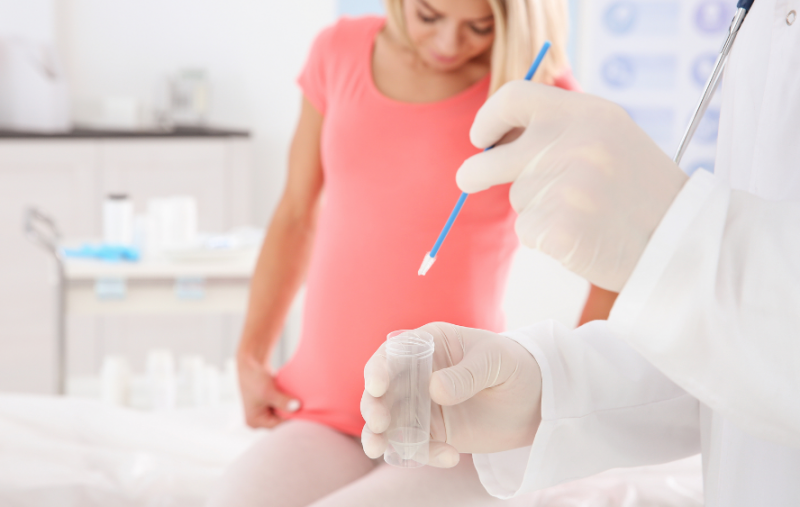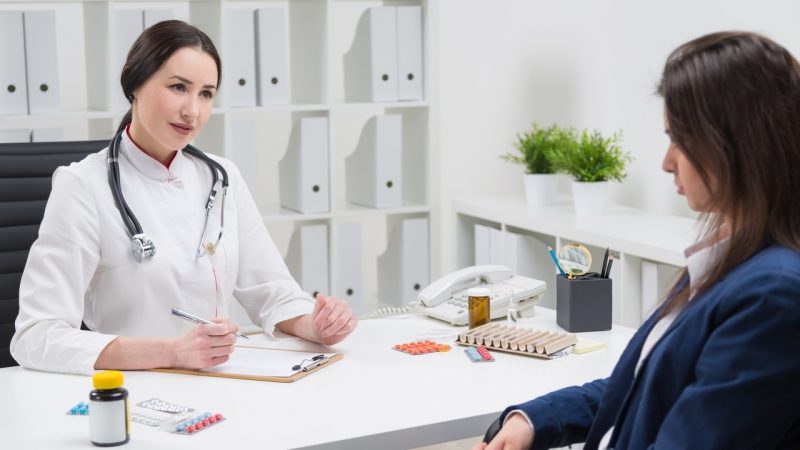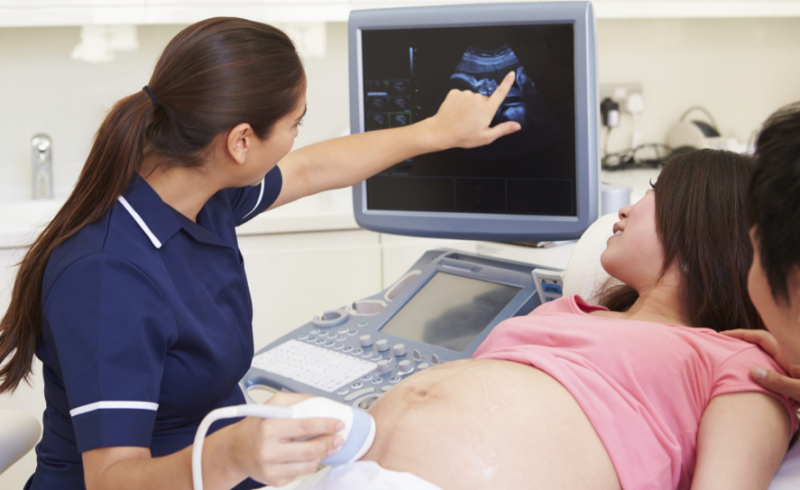Bimanual research is a fairly simple medical manipulation that allows you to quickly and without the use of special equipment to assess the condition of female internal organs. Obstetrician-gynecologists use this method at almost every examination of the patient on the chair, and send for additional diagnostics only after identifying abnormalities.
Material Content:
Description of diagnostic method
The study is carried out by an obstetrician-gynecologist when the patient is lying on a chair. The doctor spreads the woman’s labia with one hand, and gently inserts the middle and index fingers of the other hand into the vagina. At the same time, the ring finger and little finger are pressed to the palm of the hand, and the large is protruded upward, so the brush folds into the shape of a pistol. Normally, patients feel only slight discomfort, and then only because of the intimacy of the procedure.
Then the doctor puts the free hand on the woman’s stomach and displaces the uterus through the abdominal wall so that the organ is between his two hands. After palpation of the uterus, the gynecologist moves his hands a little to the right, and then to the left, thus studying the appendages (fallopian tubes and ovaries), which in most cases are not palpable. In the end, the doctor removes one arm from the patient’s abdomen, and gently removes the other from the vagina.
Vaginal gynecological examination is carried out only for girls who have already begun to have sex.If a girl needs diagnosis, the doctor can also examine internal organs in a similar way, but the fingers are inserted not into the vagina, but into the rectum. In order not to injure the delicate mucous membrane, a pediatric gynecologist should generously lubricate mittens, for example, petroleum jelly. This method is used only in the presence and after the consent of the parents, if the child has not yet reached the age of 18. It is important that the patient empty her intestines and bladder before the procedure.
All manipulations must be carried out in sterile mittens, otherwise both the patient and the doctor risk taking infections.
Indications for bimanual research
Since a two-handed study is a simple and inexpensive diagnostic method, doctors use it during each routine examination of women. It allows you to suspect the presence of pathology, pregnancy, or make sure that everything is in order.
The list of certain indications does not exist, but several conditions can be distinguished in which it is desirable to resort to the bimanual method:
- menstrual retardation;
- routine inspection;
- aching, bursting pains in the lower abdomen;
- spotting that is not related to menstruation;
- excessively painful menstruation;
- discomfort during intercourse.
During pregnancy, they try not to disturb the uterus in vain, so a two-handed study is carried out only three times - when registering, at 27-29 weeks, at 36-37 weeks. In addition, this method is resorted to directly during childbirth.
Preparation for the gynecological procedure
A vaginal two-handed examination does not require any special preparation.
However, to make the procedure more comfortable for the patient and informative for the gynecologist, you should:
- Prepare a list of complaints in advance so as not to forget anything and not delay the reception;
- wash yourself with running water without using soap, so as not to disturb the microflora of the vagina;
- It is advisable to come to the reception in the first days after menstruation, because it is then that the doctor will be able to get the most clear clinical picture. However you can not tolerate acute pain, itching, discomfort and unpleasant discharge - in such cases, you should immediately seek help;
- exclude soda, legumes, cabbage from the diet;
- at least a day to stop having sex;
- On the day of the study, you need to empty the intestine, and immediately before taking it, empty the bladder.
In emergency situations, the examination is carried out without any preparation, because there is simply no time for it.
Features during pregnancy
A bimanual study with a delay in the menstrual cycle allows you to establish the presence of early signs of pregnancy, they include:
- soft consistency of the uterus, especially in the area of the isthmus, which almost ceases to be felt between the hands;
- tension of the uterus after its light stimulation, which passes within a few seconds after the termination of exposure;
- change in the shape of the uterus, its curvature in one of the parties;
- an increase in the size of the organ, which becomes noticeable already at 5-6 weeks of pregnancy.
In order not to provoke a spontaneous miscarriage, obstetrician-gynecologists try not to disturb the child's place, so a vaginal examination is carried out only 3-4 times throughout the duration of pregnancy.
Also, a two-handed revision is resorted to after the birth, evaluating the consistency of the uterus and its ability to contract. Sometimes a massage is performed in this way to speed up the separation and exit of the afterbirth.
Deciphering the results
Normally, during the study, the cervix and body of the uterus, isthmus are determined. The organ has a pear-shaped shape, elastic consistency, flat surface, mobility, does not cause pain when displaced. Appendages usually cannot be palpated, sometimes the doctor can feel the bean-like formations on the sides of the uterus - the ovaries.
Deviations from the classical picture may indicate the presence of any disease:
- soreness with displacement - an inflammatory or adhesive process in the pelvis;
- an increase in the size of the uterus, a change in its shape - pregnancy, a benign or malignant tumor;
- rough surface of the organ - uterine fibroids;
- palpation of the appendages, which causes discomfort, - salpingoophoritis (inflammation of the ovaries);
- the inability to conduct research due to severe pain is an acute inflammation of the pelvic organs.
Despite the large number of advantages of bimanual research in gynecology, it has one significant minus - it is almost impossible to probe the internal organs of patients in the body. Enlarged body fat does not provide sufficient access to the uterus and appendages. Overweight women can only study the reproductive system using ultrasound.
Contraindications to the manipulation
The two-handed diagnostic method has no contraindications. They try not to conduct it without special need to girls who have not yet had sex, as well as pregnant women, especially if there is a threat of spontaneous abortion.


















